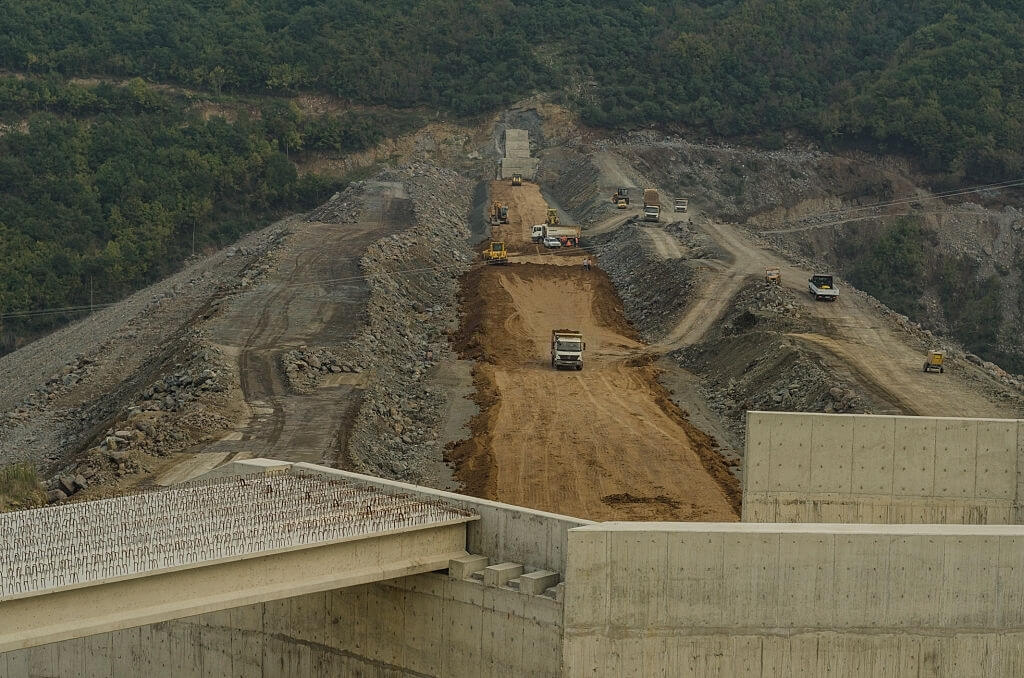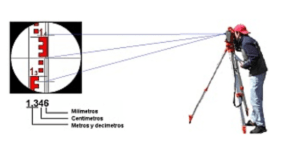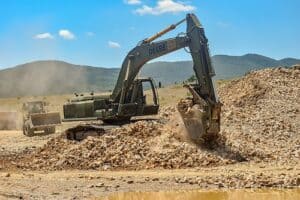Soil stabilization is an alteration process of one or more soil properties to improve soil performance. Stabilization, broadly speaking, incorporates the various methods used to modify a soil’s properties to improve its engineering performance. Stabilization can be achieved by mechanically mixing the natural soil and the stabilizing material in order. To obtain a homogeneous mixture or by adding stabilizing material to an undisturbed soil deposit and getting interaction by letting it penetrate through the soil’s voids. Soil stabilizing materials can be used to improve the properties of less desirable soils.
What is soil Stabilization?
Soil stabilization is a method in which soil quality improves by using special soil, cement material, or other chemicals. Stabilization increases the shear strength of soil or controls the swelling properties of soil. It improves the load-bearing capacity of soil to support flooring, foundations, and roads.
Reasons for Soil Stabilization
Soils are susceptible to changes in volume and strength. It can cause severe roughness and acceleration. The deterioration of the road structure appears in the form of increased cracks, reduced ride quality, and truck traffic.
In general, the rigidity of some soils strongly depends on the humidity and the state of stress. In some cases, the subsoil can be treated with various materials to improve the soil’s strength and stiffness. Soil stabilization is usually performed for three reasons:
- As a construction platform for drying very moist soils and facilitating the compaction of the upper layers, in this case, stabilized soil is not generally considered as a structural layer in the flooring design process.
- Modified soil is usually assigned a structural value or credit in the flooring design process. It is done to make stronger, weak soil and limit the volume change potential of highly plastic or compressible soil.
- Reduce the sensitivity to the moisture of fine-grained soils.
Materials for soil stabilization
Soil stabilization involves the use of binding materials in weak soils to improve their geotechnical properties.
Commonly these materials are used in the stabilization of soil
- Cement
- Lime
- blast furnace slag
- fly ash
Cement
Cement is the oldest binding agent since the invention of soil stabilization technology. It can be considered as a primary stabilizing agent or a hydraulic binder because it can be used alone to achieve the required stabilizing action. The reaction of cement does not depend on soil minerals, and the critical role is its reaction with water, which can be available in any soil. I
t may be the reason why cement is used to stabilize a wide range of soils. Numerous cement types are available on the market; these are ordinary Portland cement, blast furnace cement, sulfate resistant cement, and high alumina content cement. Usually, cement choice depends on the type of soil to be treated and the desired final strength.
The hydration process is a process by which the cement reaction takes place. The process begins when the cement is mixed with water and other components for the desired application, causing hardening phenomena. The hardening (setting) of the cement will enclose the soil as glue. But it will not change the structure of the soil.
The hydration reaction proceeds slowly from the surface of the cement granules. The center of the granules may remain un-hydrated.
This process can be influenced by
- Presence of foreign bodies or impurities
- water-cement ratio
- hardening temperature
- Presence of additives
- Specific the specific surface of the mixture.
Depending on the factor (s) involved, the final effect on setting and increasing the soil’s strength stabilized with cement may vary. Therefore, It should be considered when designing the mix to get the required strength. Calcium silicates, C3S, and C2S are the main cement properties of ordinary Portland cement responsible for developing strength.
Calcium hydroxide is another Portland cement hydration product that further reacts with pozzolanic materials in stabilized soils to produce additional cementitious material. Usually, the amount of cement used is small but sufficient to improve soil’s engineering properties and further improve the cation exchange of clay. Concrete stabilized soils have the following improved properties:
- Reduced cohesion (plasticity) and volume expansion
- Greater resistance
Read Also: Properties of Cement that effect Quality
Lime
Lime provides an inexpensive way to soil stabilization. The lime modification describes an increase in strength brought about by the cation exchange capacity rather than the cementing effect of the pozzolanic reaction.
In the soil stabilization, while the clay particles flocculate, it transforms the natural clay particles similar to plaques into metal structures with interlocking needles. Clay soils become drier and less sensitive to changes in water content.
Lime stabilization can refer to the pozzolanic reaction in which pozzolan materials react with lime in water to produce cement compounds. The effect can be brought from quicklime, CaO, or hydrated lime, Ca (OH) 2. Liquid lime can also be used in dry soils where water may be needed for effective compaction.
The following are the advantages of quicklime over hydrated lime.
– Higher free lime content available per unit of mass
– Denser than hydrated lime (less storage space is needed) and less dust
– generates heat which accelerates the gain of strength and a great reduction in humidity content according to the reaction equation below
o () (65 /) CaO + H2O → Ca OH 2 + Heat kJ mol.
Quicklime absorbs up to 32% of its water weight from the surrounding soil to form hydrated lime when mixed with wet soils. The heat generated by this reaction will also cause a loss of water due to the evaporation that transforms the results into a greater plastic limit of the soil, i.e., drying and absorption.
The effect can be explained for soil with a moisture content of 35% and a plastic limit of 25%. The addition of 2% lime will change the plastic limit to 40% so that the soil’s moisture content will be 5% lower than the plastic limit instead of 10% above the plastic limit.
The decrease in plasticity is caused primarily by the exchange of cations. The sodium and hydrogen cations are replaced by calcium ions, for which the clay mineral has a greater affinity with water.
Even in soils where the clay can be saturated with calcium ions, lime increases the pH and therefore increases the exchange capacity. Like cement, when reacting with wet clay minerals, lime causes an increase in pH, which favors siliceous and aluminous compounds’ solubility.
These compounds react with calcium and produce calcium silicate and calcium alumina hydrates, a cement product similar to that of cement paste. Natural pozzolan materials containing silica and alumina ( clay minerals, pulverized fly ash, PFA, blast furnace slag) have great reaction potential with lime. Lime stabilization technology is widely used in geotechnical and environmental applications.
Fly ash
Fly ash is a by-product of coal-fired electricity generation plants; it has fewer cement properties than lime and cement. Most fly ash belongs to secondary binders; these binders cannot produce the desired effect independently. With a small amount of activator, it can react chemically to form a cementitious compound that contributes to improving soft soil resistance.
Fly ash is readily available, cheaper, and more environmentally friendly. There are two main classes of fly ash; class C and Class F. Class C fly ash is produced by burning sub-bituminous coal; has high cementing properties due to the high content of free CaO. Class C of lignite has the highest CaO (above 30%) with self-cementing characteristics (FM 5-410).
Fly ash of class F is produced by burning anthracite and bituminous coal; it has low self-cementing properties due to the limited amount of CaO available for the flocculation of clay minerals and therefore requires the addition of activators such as lime or cement.
The reduction in the swelling potential achieved in soil stabilization with fly ash refers to mechanical bonding rather than ion exchange with clay minerals. Fly ash stabilization of soil method has the following limitations,
- The soil to be stabilized must have a lower moisture content; therefore, drainage may be required.
- The mixture of ground ash vulcanized below zero and therefore immersed in water are highly susceptible to crushing and loss of strength
- The sulfur content can form expansive minerals in the soil fly ash mixture, which reduces strength and long-term durability.
Blast Furnace Slags
These are the by-products of cast iron production. Chemical compositions are similar to those of cement. However, it is not a cementitious compound on its own, but it has latent hydraulic properties that can develop with the addition of lime or alkaline material. Depending on the cooling system, detailed slags in three forms, namely:
Air-cooled slag
After leaving the blast furnace, hot slag can be slowly cooled in the open air, resulting in crystallized slag. It can be crushed and used as an aggregate.
Pelletized slag
Extinction (i.e., sudden cooling with water or air) of hot slag can cause vitrified slag formation. The slag from the granulated blast furnace is the result of water use during the hardening process when the use of air in the hardening process can cause the formation of pelletized slag.
Expanded slag
Under certain conditions, the steam produced during the cooling of the hot slag can generate expanded slag.
Pozzolanas
As per (ASTM 595), the pozzolana is siliceous and aluminous materials, which in themselves have little or no cementitious value, but will react, in a finely divided form and the presence of humidity, reacting chemically with calcium hydroxide at normal temperature to form compounds having cementitious properties. Clay minerals such as kaolinite, montmorillonite, and mica are pozzolanic in nature.
Artificial pozzolans such as ashes are products obtained by thermal treatment of natural materials containing pozzolans. When the plants are burned, the silica is taken from the soils because they are left behind in the ashes contributing to the pozzolanic element. Rice husk ash, rice straw, and bagasse are rich in silica and create an excellent pozzolana.
Methods of soil stabilization
Basically, there are two methods of soil stabilization.
- In situ method
- Ex-situ method
In situ Method
This method of soil stabilization involves improving the soil on-site by applying the stabilizing agent without removing the loose soil. This technology offers the advantage of improving soils for deep foundations, shallow foundations, and contaminated sites.
The technology can be achieved by injection into cement soils such as cement and lime in dry or wet forms. The choice of using dry or wet deep mixing methods depends, among other things;
- The conditions of the soil in situ,
- The moisture content in situ, the effectiveness of the binders to be used and the nature of the construction to be founded. Depending on the depth of the treatment, in situ stabilization can be considered as a deep mixing method or mass stabilization.
Deep Mixing Method
The deep mixing method involves stabilizing soils at great depth. It is an in situ soil stabilization technology in which a wet or dry binder is injected into the soil and mixed with in situ soft soils (clay, peat, or organic soils) using a mechanical or rotary mixing tool.
Depending on the applications, the following motifs can be produced single motifs, block motifs, panel motif, or stabilized grid motifs. The goal is to produce a stabilized soil mass that can interact with natural and non-natural soil, to produce too rigidly stabilized soil mass as a rigid pile that can independently carry out the design load.
Therefore, the increase in strength and rigidity of stabilized soil should not prevent effective interaction and load distribution between stabilized soil and natural soil. Therefore, the design load should be distributed and executed partly from natural soil and partly from stabilized soil mass.
Dry Mixing Method
The dry mixing method (DM) is clean, silent with very low vibrations, and does not produce any residue for disposal. This method involves in use of dry binders injected into the soil and carefully mixed with moist soil.
The soil is premixed using a specialized tool during low penetration until the desired depth is reached. During the removal of the mixing tool, a dry binder is then injected and mixed with premixed soil leaving a wet soil mixing column.
Ex Situ Soil Stabilization
The technology provides for the displacement of soils and sediments from the original position and moves to another modification place. These can be found in dredging the river channel and ports.
The main objectives of dredging can be modifying contaminated sediments to reduce toxicity and mobility or the maintenance or deepening of navigation channels for the safe passage of ships and boats. Off-site treatment of the sediment can be carried out in confined disposal facilities (CDF) and can be used or disposed of at the designated site.
The method of removing means of transport, the availability of the place of treatment, the disposal site, or the request for reuse are key factors to consider when planning ex-situ stabilization. The sediment treatment in the CDF is part of the ex-situ mass stabilization method, which can be carried out indifferently.





